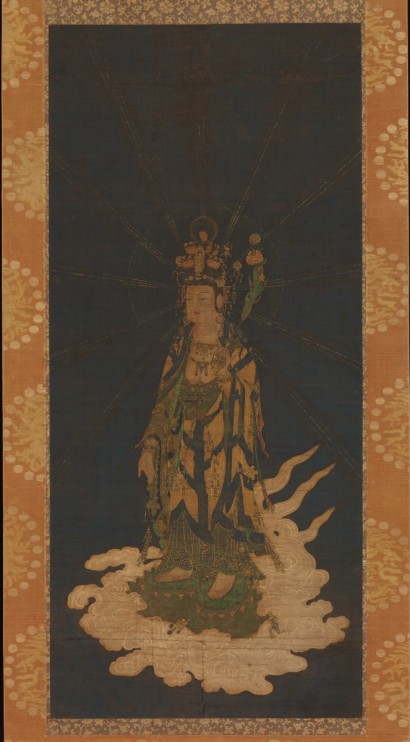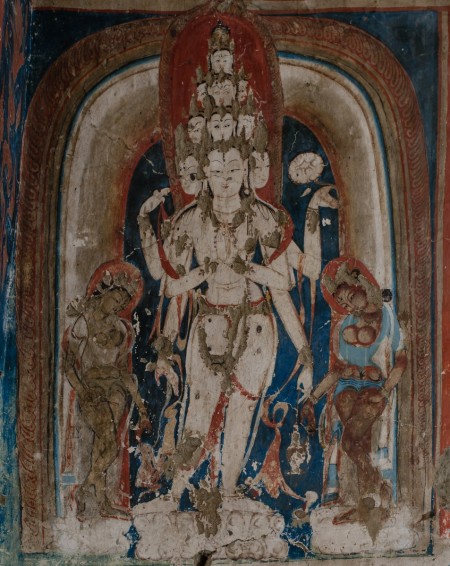Japan, Kamakura period, 14th century; hanging scroll, ink, color, gold, and cut gold on silk; image: 33 15/16 x 15 1/4 in., mount: 64 1/4 x 19 1/2 in., The Metropolitan Museum of Art, Purchase, Charles Wrightsman Gift, Joseph Pulitzer Bequest, Dodge, Pfeiffer and Rogers Funds, and funds from various donors, 1972, 1972.181, photo: www.metmuseum.org.
Eleven–headed Avalokiteshvara
Western Tibet, Dungkar, mid–10th–12th century; wall painting, photo: Filippo Zonta, 2013.
Caves in far western Tibet preserve Indic-inspired paintings of Avalokiteshvara’s eleven-headed form. The ten additional heads look in every direction for those who need help; Amitabha rests on top. Following the Indian manner, the muralist here arranged the heads in an extremely vertical format, recalling Avalokiteshvara’s characteristic upswept matted hair. In East Asia, as in the painting on the left, the multiple faces encircle the head like a diadem.





